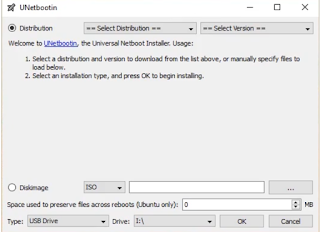- Bootloader Options: The bootloader loads the operating system. Some ISO burners allow you to choose the bootloader you'll need for your desired operating system installation.
- Grub4dos: A bootloader package designed to allow users to select between multiple operating systems installed on a single system.
- Syslinux: A lightweight bootloader package designed to allow users to select between multiple Linux or Unix installations.
- QEMU: Short for Quick Emulator, is a hardware virtualization tool. In this context, it allows users to test their USB before proceeding with the burn process.
- Cluster Size: Defines the smallest available space for storing data. Instead of assigning individual disk sectors, the file system assigns contiguous groups of sectors, called clusters.
- File System: Controls how data is accessed and stored. Without it, your data would lump together with no beginning or end. A file system defines easy access. There are different file systems available, though your burning tool should discern your requirements via the ISO you use.
- Bad Sector: Some ISO to USB tools allow you to perform a bad sector check. Before the burn commences, your USB will be scanned, fixing any irregularities to ensure your installation is smooth. Somewhat like defragmenting your desktop, but on a much smaller scale.
Rufus
Features: Partition schemes, file systems, automatic ISO detection, target system type, mode of bootable, bad sector checks, ISO write mode
First up, Rufus. Rufus is a very small executable that has consistently improved its offerings over the years. Along with standard ISO to USB options such as cluster size and file system, Rufus now automatically detects settings for the ISO you select and fills in the optimal settings. Furthermore, Rufus has a hidden Advanced Mode with a bunch of extra options.
Rufus clocked in at 21m12s which is definitely not the fastest. Regardless, Rufus is an excellent ISO to USB tool.
Windows USB/DVD Download Tool
Features: None
Such an eloquent name. You select your ISO. You select your media type; USB or DVD. You click Begin Copying, and off it goes. In what is the most basic of basic UIs, and with only two options, the Windows USB/DVD Download Tool is almost sublimely simple, comparable only to ISO to USB.
Windows USB/DVD Download Tool came home in 17m51s which puts it toward the top of the ISO to USB timings board.
RMPrepUSB
Features: Bootloader options, file systems and overrides, grub4dos, syslinux, QEMU
RMPrepUSB is one of the most complete ISO to USB packages on this list. Aside from the features above, it comes packed with a host of other bootloaders, DiskDoctor, Speed Tests, and individual user configurations for frequently prepared drives.
YUMI
Features: Multiboot, ISO auto-download
YUMI (Your Universal Multiboot Installer) is another multiboot ISO to USB installer with settings for a vast range of Linux, Windows, and system utility ISOs. YUMI is easy to use. You scroll down the distribution list and check for the ISO you want, then select the corresponding ISO on your system from the box below. Don't have the ISO? YUMI will take care of that for you.
. Novicorp WinToFlash
Features: Multiboot, grub4dos, bootloader options, burning wizard, file systems, burning profiles, ISO auto-download
Novicorp WinToFlash is a popular ISO to USB utility that features a handy burning wizard. The wizard guides you through the burning process, although it isn't unique to the utility (Rufus fills in all the information you need, for example). WinToFlash also allows you to create multiboot USBs as well as an auto-downloader for any ISO files you're missing.
WinToFlash clocks in at 22m01, decent speed for a tool that guides you through the ISO to USB process.
UNetbootin
Features: grub4dos, ISO auto-download (Linux only), syslinux
UNetbootin is primarily a Linux LiveUSB burning tool, but it works sufficiently well with Windows that it deserves inclusion in this list. The UNetbootin utility isn't flashy, but it does come with a few nifty features. For instance, it has an auto-download feature for Linux distributions, letting you select from a range of popular distros and system utility tools.
UNetbootin came home in 22m01, exactly the same as WinToFlash and again, a decent time for a useful tool.
ref:
https://www.makeuseof.com/tag/10-tools-make-bootable-usb-iso-file/






沒有留言:
張貼留言